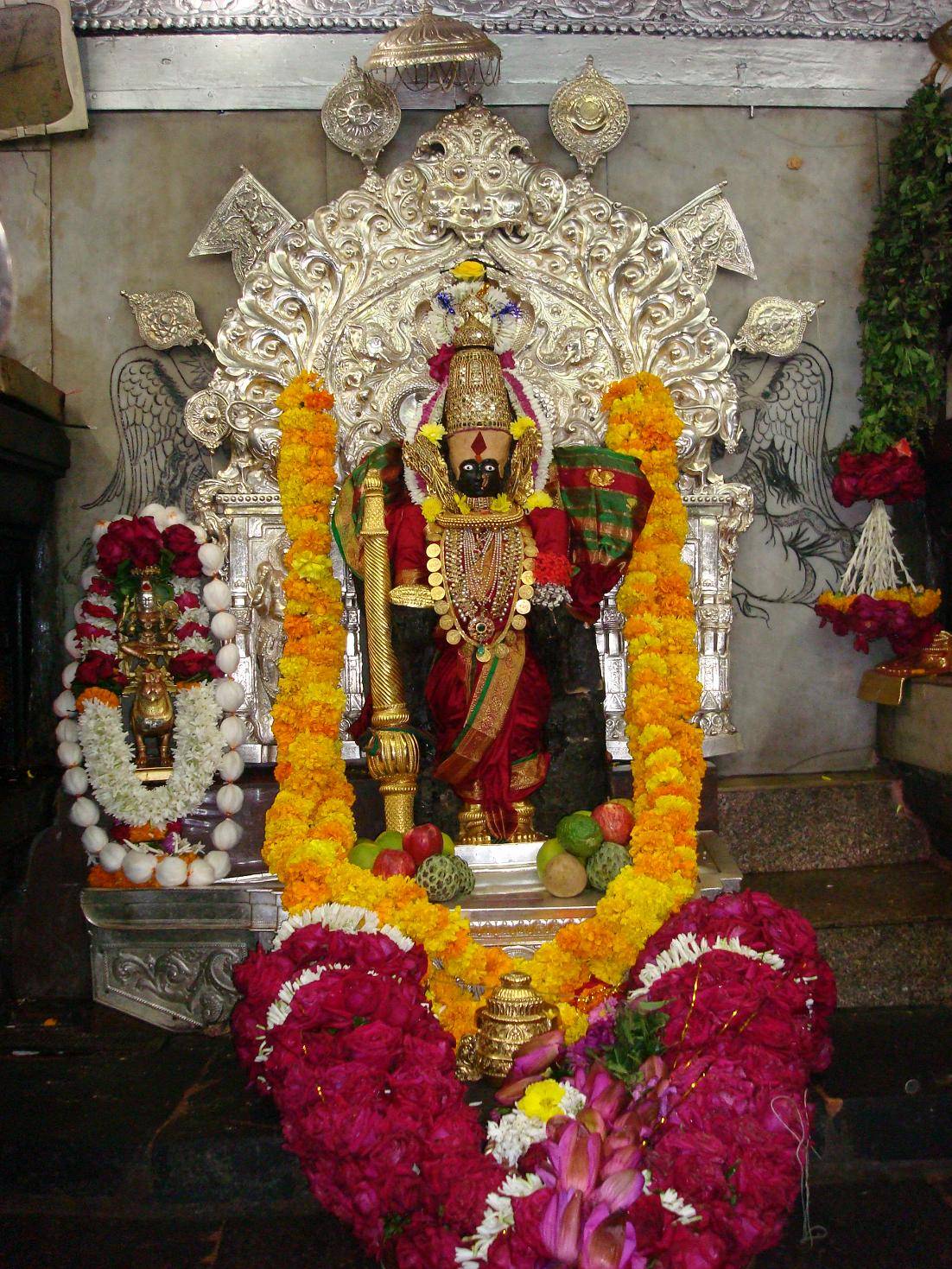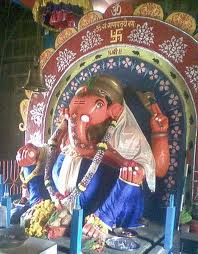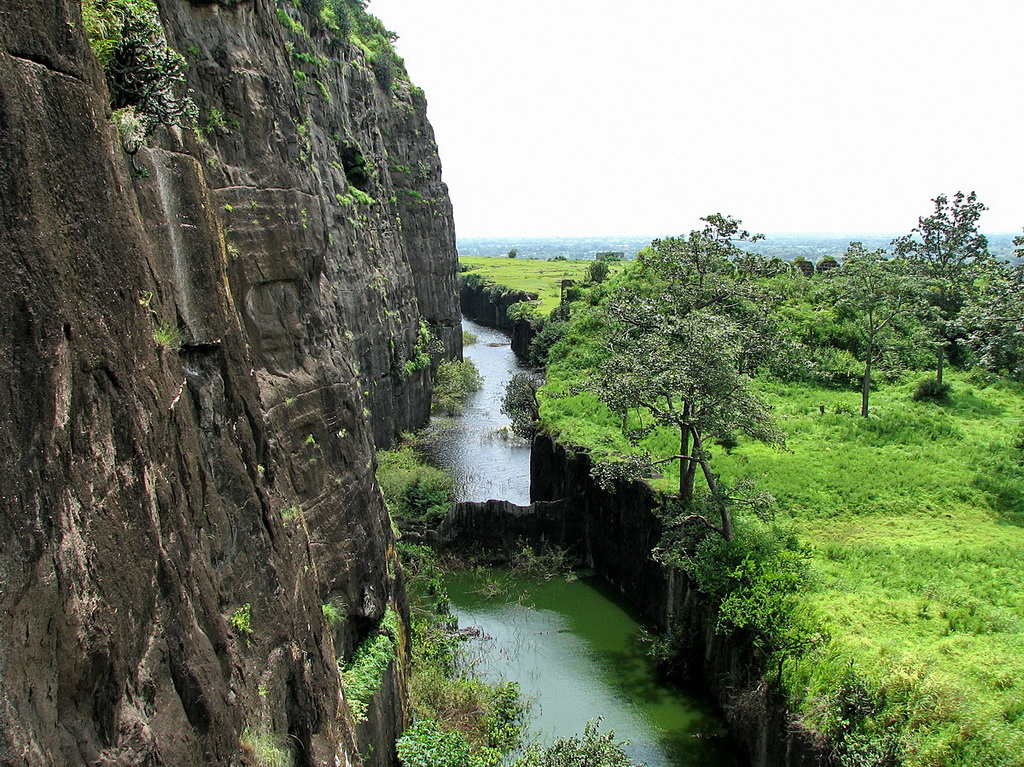|
Sangola
Sangole or (Sangola) is a city with a municipal council in Solapur district in the Indian state of Maharashtra. It is situated near Holy city Pandharpur . It is located at the intersection of state highways SH-161, SH-3, and SH-71. Traditionally, in many historic records this area was part of the Mandesh region. Its name is derived from the Maan River. Sangole is known for pomegranate production as well as jowar. Demographics According to the 2011 Indian census, Sangole had a population of 34,321. Males constituted 51% of the population and females 48%. Sangole had an average literacy rate of 82%. Male literacy was 88%, and female literacy was 77%. Twelve percent of the population was under 6 years of age. History Sangole was a prominent part of the Maratha dynasty under the Ingoles. It is believed that Sangole as a town was established around the 14th or 15th century by six Ingoles. Babaji Lakhmoji Ingole & his five sons (6 Ingole's) have constructed a fort and situa ... [...More Info...] [...Related Items...] OR: [Wikipedia] [Google] [Baidu] |
States And Union Territories Of India
India is a federal union comprising 28 states and 8 union territories, with a total of 36 entities. The states and union territories are further subdivided into districts and smaller administrative divisions. History Pre-independence The Indian subcontinent has been ruled by many different ethnic groups throughout its history, each instituting their own policies of administrative division in the region. The British Raj mostly retained the administrative structure of the preceding Mughal Empire. India was divided into provinces (also called Presidencies), directly governed by the British, and princely states, which were nominally controlled by a local prince or raja loyal to the British Empire, which held ''de facto'' sovereignty ( suzerainty) over the princely states. 1947–1950 Between 1947 and 1950 the territories of the princely states were politically integrated into the Indian union. Most were merged into existing provinces; others were organised into ... [...More Info...] [...Related Items...] OR: [Wikipedia] [Google] [Baidu] |
Kharif Crop
Kharif crops, also known as monsoon crops or autumn crops, are domesticated plants that are cultivated and harvested in India, Pakistan and Bangladesh during the Indian subcontinent's monsoon season, which lasts from June to November depending on the area. Monsoon rains may begin as early as May in some parts of the Indian subcontinent, and crops are generally harvested from the third week of September to October. Rice, maize, and cotton are some of the major Kharif crops in India. Unlike the Rabi crops, which are grown in the winter, the kharif crops require good rainfall. Etymology The words ''Kharif'' and ''rabi'' both have their origins in the Arabic language. These came to be used in India with the ascent of the Mughal Empire in the Indian subcontinent and have been widely used ever since. ''Kharif'' literally means "autumn" in Arabic. The sowing happens during monsoon and reaping happens close to Autumn in the Indian subcontinent ; this proximity to Autumn reap season is c ... [...More Info...] [...Related Items...] OR: [Wikipedia] [Google] [Baidu] |
Netaji Palkar
Netaji Palkar (1620–1681) was a '' Sardar Senapati'' or ''Sarnaubat'' ( Commander-in-Chief) under Chhatrapati Shivaji, founder of the Maratha empire. Family history Netaji Palkar was born in a small village, called Chouk in Khalapur, Maharashtra, India in a Marathi Chandraseniya Kayastha Prabhu family. Netaji's father was a major Jagirdar in Western Maharashtra under the Adil Shah. Military career Palkar was made Sarnaubat in the year 1657 after the death of Mankoji Dahatonde. During the period of the rise of Shivaji from 1645 to 1665, Netaji was given charge of many expeditions which he successfully completed. His greatest success was the campaign against the Adilshah of Bijapur Sultanate that followed the killing of Afzal Khan. His standing among the local population was such that he was known as ''Prati Shivaji'' (image of Chhatrapati Shivaji). He disturbed lot of area of Mughals till year 1665. As he did not inform about the actions of Jai Singh and Dilerkhan, Shiva ... [...More Info...] [...Related Items...] OR: [Wikipedia] [Google] [Baidu] |
Kolhapur
Kolhapur () is a city on the banks of the Panchganga River in the southern part of the Indian state of Maharashtra. It is the administrative headquarter of the Kolhapur district. In, around 2 C.E. Kolapur's name was 'Kuntal'. Kolhapur is known as ''`Dakshin Kashi''' or Kashi of the South because of its spiritual history and the antiquity of its shrine Mahalaxmi, better known as Ambabai. The region is known for the production of the famous hand-crafted and braided leather slippers called Kolhapuri chappal, which received the Geographical Indication designation in 2019. In Hindu mythology, the city is referred to as "''Karvir''." Before India became independent in 1947, Kolhapur was a princely state under the Bhosale Chhatrapati of the Maratha Empire. It is an important center for the Marathi film industry. Etymology Kolhapur is named after Kolhasur, a demon in Hindu History. According to History, the demon Kolhasur renounced asceticism after his sons were killed by God f ... [...More Info...] [...Related Items...] OR: [Wikipedia] [Google] [Baidu] |
Wai, Maharashtra
Wai (Pronunciation: �aːi) is a town in Satara district of Maharashtra state in India. Located on the Krishna River, Wai was a prominent town during the Peshwa era. Two important Maratha Brahmin from ruling families had their origins here: Rani Lakshmibai of Jhansi ( Tambe family) and Gopikabai, wife of Nanasaheb Peshwa (Raste family). Locally prominent families such as the Raste, Ranade, Phadnavis etc. built several architecturally significant temples in Wai. 400 years old Mandhradevi Kalubai temple is about 12 kilometers from Wai on a hill 718 metres above sea level. In recent decades, Wai has become a popular location for filming Bollywood and Marathi movies, with over 300 films have been shot in and near Wai. History Wai has the epithetic name "Dakshin Kashi" (Kashi or Varanasi of the South) because of the city's more than 100 temples. Wai is known in Maharashtra for its ghats on the banks of the Krishna River and its temples, especially the Dholya ganapati temple on Ga ... [...More Info...] [...Related Items...] OR: [Wikipedia] [Google] [Baidu] |
Shivaji
Shivaji Bhonsale I (; 19 February 1630 – 3 April 1680), also referred to as Chhatrapati Shivaji Maharaj, was an Indian ruler and a member of the Bhonsle Maratha clan. Shivaji carved out his own independent kingdom from the declining Adilshahi sultanate of Bijapur which formed the genesis of the Maratha Empire. In 1674, he was formally crowned the ''Chhatrapati'' of his realm at Raigad Fort. Over the course of his life, Shivaji engaged in both alliances and hostilities with the Mughal Empire, the Sultanate of Golkonda, Sultanate of Bijapur and the European colonial powers. Shivaji's military forces expanded the Maratha sphere of influence, capturing and building forts, and forming a Maratha navy. Shivaji established a competent and progressive civil rule with well-structured administrative organisations. He revived ancient Hindu political traditions, court conventions and promoted the usage of the Marathi and Sanskrit languages, replacing Persian in court and administratio ... [...More Info...] [...Related Items...] OR: [Wikipedia] [Google] [Baidu] |
Afzal Khan (general)
Afzal Khan (died 20 November 1659) was a general who served the Adil Shahi dynasty of Bijapur Sultanate in India. He played an important role in the southern expansion of the Bijapur Sultanate by subjugating the Nayaka chiefs who had taken control of the former Vijayanagara territory. In 1659, the Bijapur government sent Afzal Khan to subjugate Shivaji, a former vassal who had started acting independently. He was killed at a truce negotiation meeting with Shivaji, and his army was defeated at the Battle of Pratapgad. Victory over the Nayakas Amid the decline of the Vijayanagara Empire, the Bijapur government campaigned against the Nayaka chiefs who had taken control of the former Vijayanagara territory. One of these chiefs was Virabhadra, the Nayaka of Ikkeri. Kenge Nayaka (or Keng Nayak), the chief of Basavapattana and a discontented tributary of Virabhadra, helped the Bijapur army capture Ikkeri in exchange for 1,00,000 rupees, forcing Virabhadra to flee to Bednur. Subs ... [...More Info...] [...Related Items...] OR: [Wikipedia] [Google] [Baidu] |
Sambhaji
Sambhaji Bhosale (14 May 1657 – 11 March 1689) was the second Chhatrapati of the Maratha Empire, ruling from 1681 to 1689. He was the eldest son of Shivaji, the founder of the Maratha Empire. Sambhaji's rule was largely shaped by the ongoing wars between the Maratha Empire and the Mughal Empire, as well as other neighbouring powers such as the Siddis, Mysore and the Portuguese in Goa. After Sambhaji's death, his brother Rajaram I succeeded him as the next Chhatrapati. Early life Sambhaji was born into a Marathi Hindu family at Purandar fort to the Maratha ruler Shivaji, and his first wife Saibai, who died when he was two years old and he was raised by his paternal grandmother Jijabai. At the age of nine, Sambhaji was sent to live with Raja Jai Singh I of Amber as a political hostage to ensure compliance of the Treaty of Purandar that Shivaji had signed with the Mughals on 11 June 1665. As a result of the treaty, Sambhaji became a Mughal mansabdar. He and his father S ... [...More Info...] [...Related Items...] OR: [Wikipedia] [Google] [Baidu] |
Daulatabad, Maharashtra
Daulatabad Fort, also known as Devagiri Fort or Deogiri Fort, is a historic fortified citadel located in Daulatabad village near Aurangabad, Maharashtra, India. It was the capital of the Yadava dynasty (9th century–14th century CE), for a brief time the capital of the Delhi Sultanate (1327–1334), and later a secondary capital of the Ahmadnagar Sultanate (1499–1636). Around the 6th century CE, Devagiri emerged as an important uplands town near present-day Aurangabad, along caravan routes going towards western and southern India. The historical triangular fortress in the city was initially built around 1187 by the first Yadava king, Bhillama V. In 1308, the city was annexed by Sultan Alauddin Khalji of the Delhi Sultanate, which ruled over most of the Indian subcontinent. In 1327, Sultan Muhammad bin Tughluq of the Delhi Sultanate renamed the city from Devagiri to Daulatabad and shifted his imperial capital to the city from Delhi, ordering a mass migration of Delhi's popula ... [...More Info...] [...Related Items...] OR: [Wikipedia] [Google] [Baidu] |
Alauddin Khalji in the Indian subcontinent. Alauddin instituted a number of significant administrative changes, related to revenue reforms of Alauddin Khalji, revenues, market reforms of Alauddin Khalji, price controls, and rebellions against Alauddin Khalji#Measures for preventing rebellions, society. He also successfully fended off several Mongol invasions of India.
Alauddin was a nephew and a son-in-law of his predecessor Jalal ud din Firuz Khalji, Jalaluddin. When Jalaluddin became the Sultan of Delhi after deposing the Mamluk dynasty (Delhi), Mamluks, Alauddin was give ...
Alaud-Dīn Khaljī, also called Alauddin Khilji or Alauddin Ghilji (), born Ali Gurshasp, was an emperor of the Khalji dynasty that ruled the Delhi Sultanate The Delhi Sultanate was an Islamic empire based in Delhi that stretched over large parts of the Indian subcontinent for 320 years (1206–1526). [...More Info...] [...Related Items...] OR: [Wikipedia] [Google] [Baidu] |
Yadava
The Yadava (literally, descended from Yadu) were an ancient Indian people who believed to be descended from Yadu, a legendary king of Chandravamsha lineage. The community was formed of various clans, being the Abhira, Andhaka, Vrishni, and Satvatas, who all worshipped Krishna. They are listed in ancient Indian literature as the segments of the lineage of Yadu (''Yaduvamsha'').Thapar, Romila (1978, reprint 1996). ''Ancient Indian Social History: Some Interpretations'', New Delhi: Orient Longman, , p.223 At various times there have been a number of communities and royal dynasties of the Indian subcontinent that have claimed descent from the ancient Yadava clans and legendary Yadava personalities, thus describing themselves as the Yadavas. The sociologist M. S. A. Rao and historians such as P. M. Chandorkar and T. Padmaja say that epigraphical and historical evidence exists for equating the Ahirs with the ancient Yadava clan. The Yadavas of the Mahabharata period were known to be ... [...More Info...] [...Related Items...] OR: [Wikipedia] [Google] [Baidu] |






